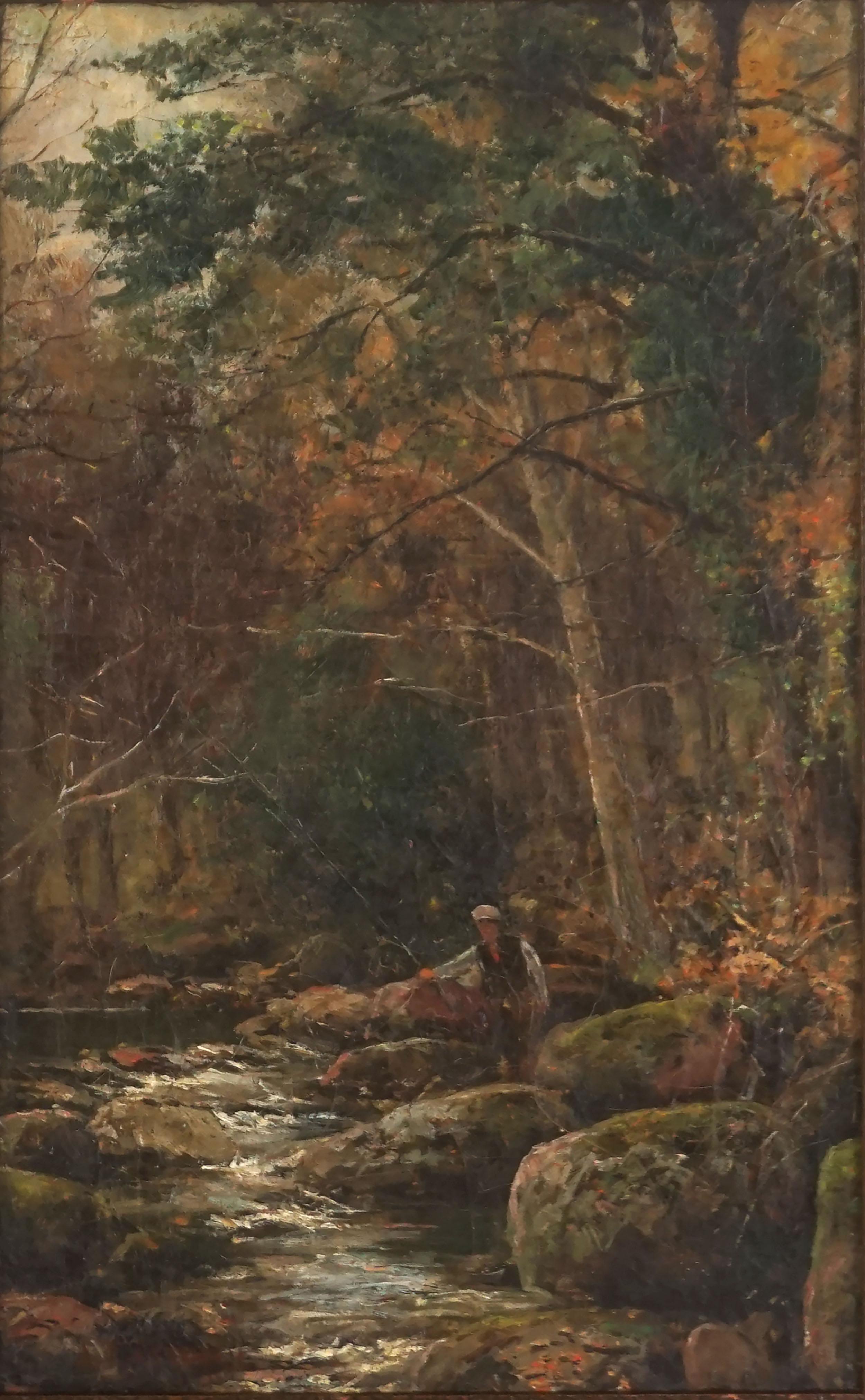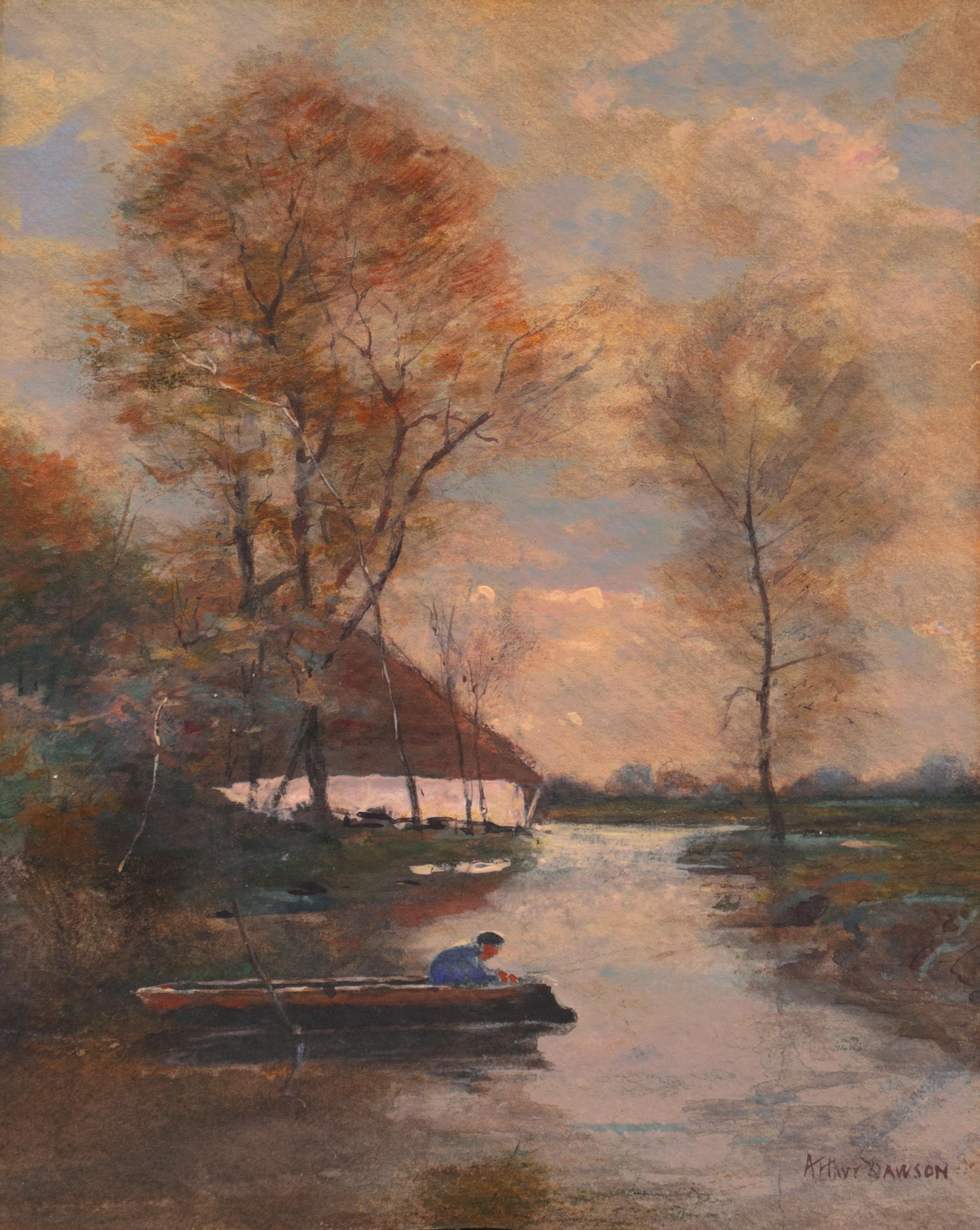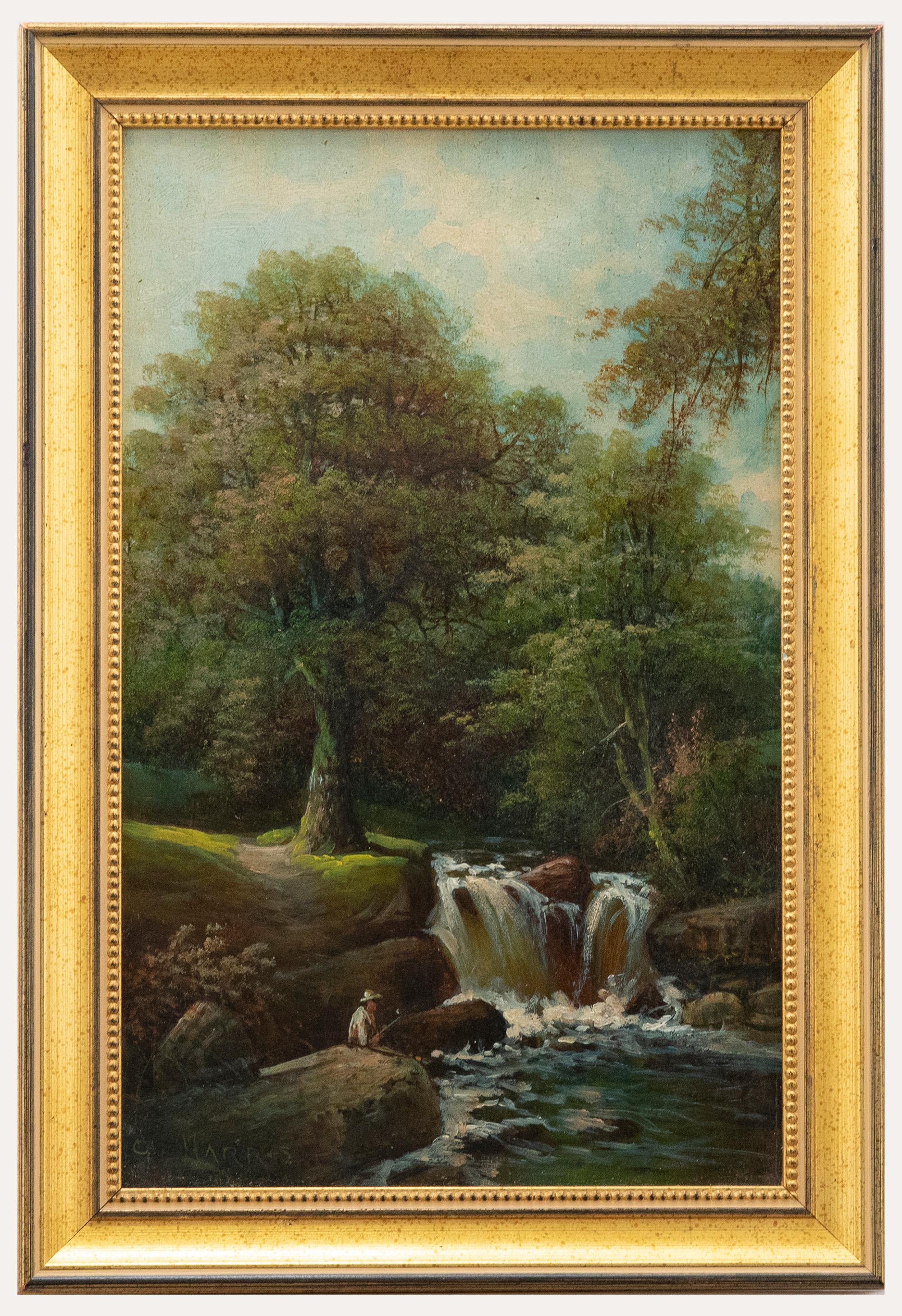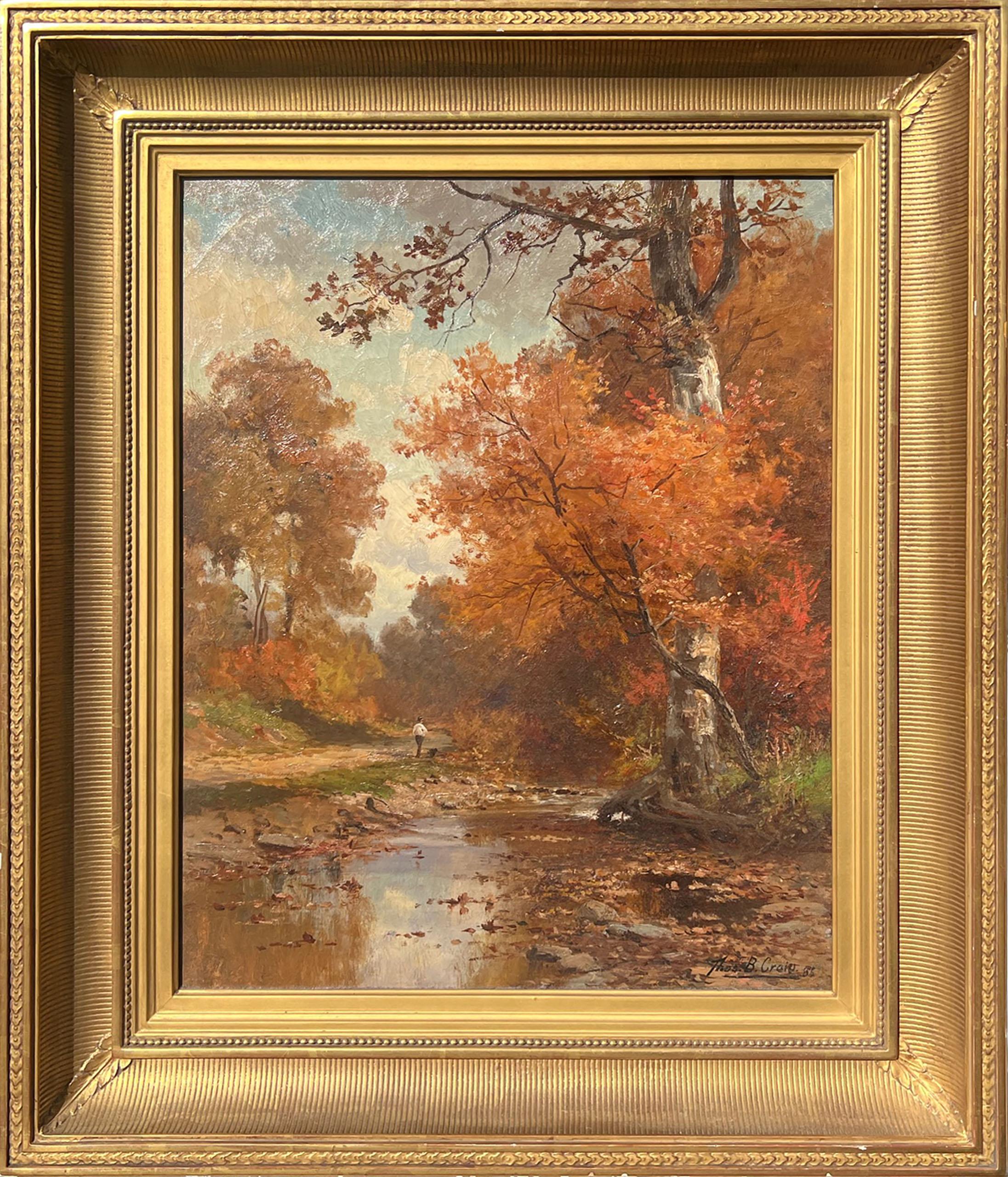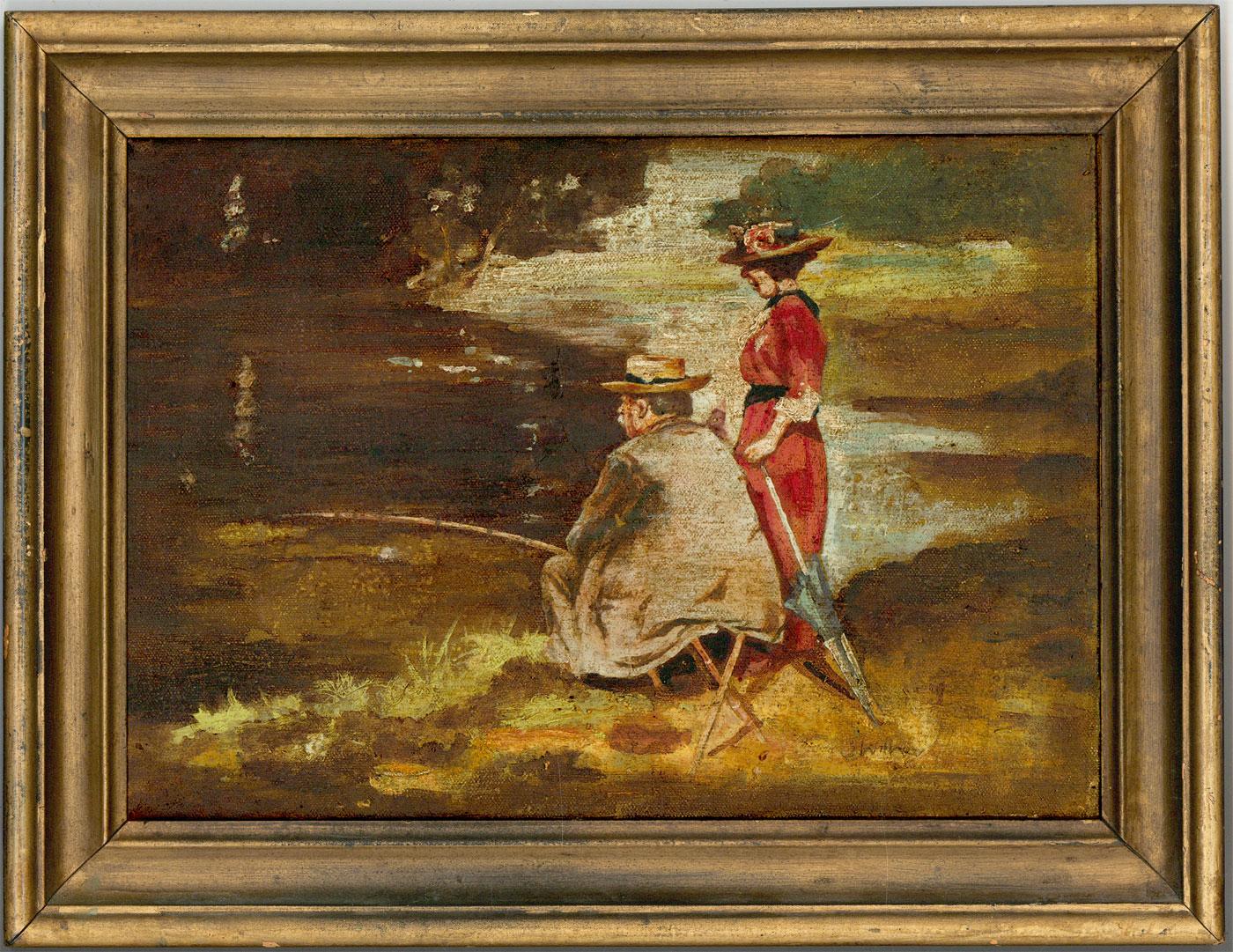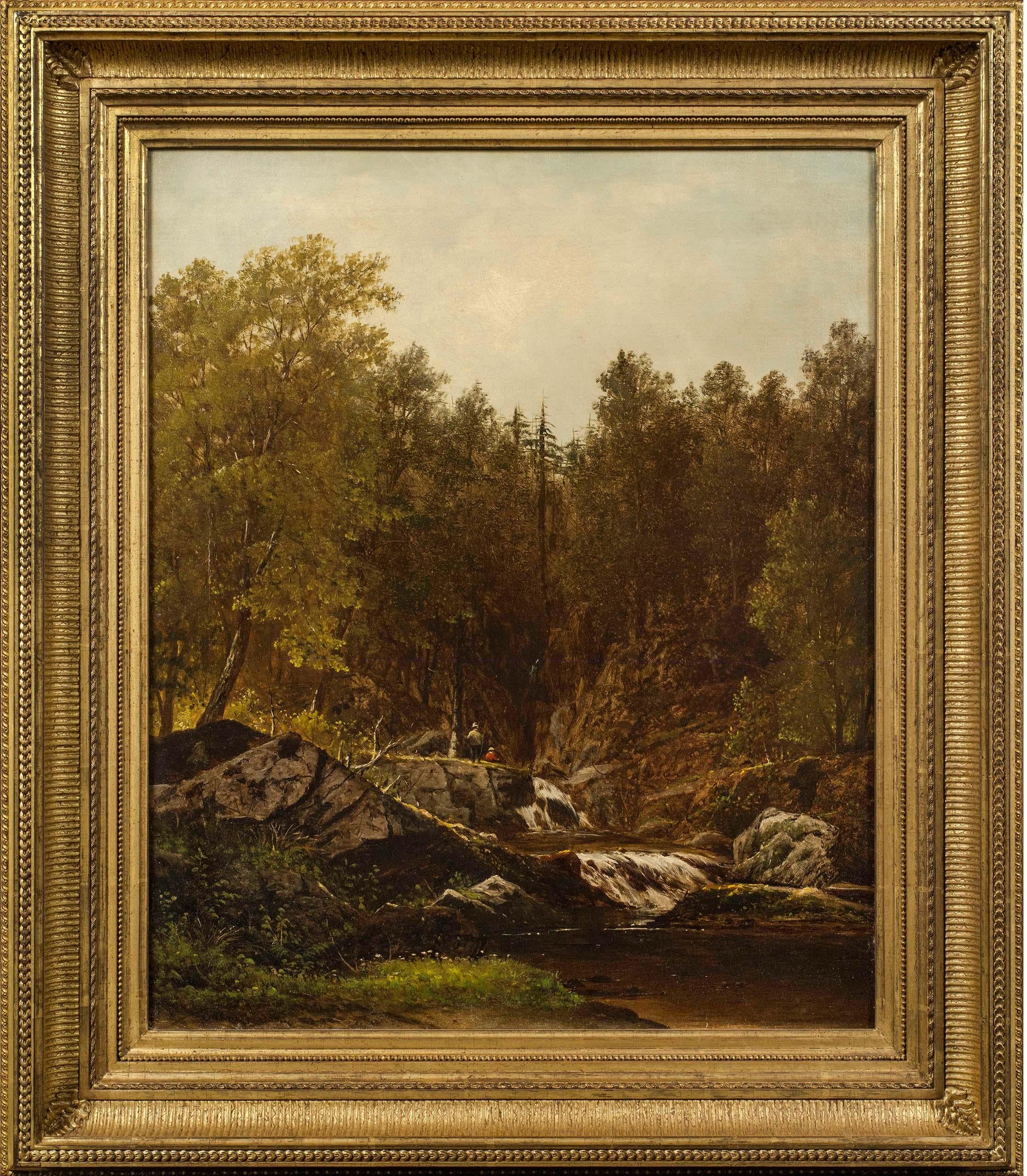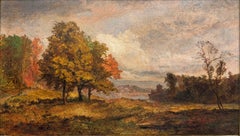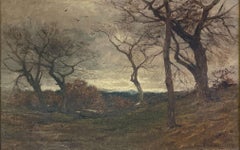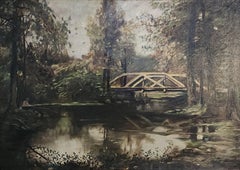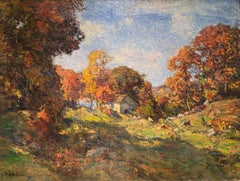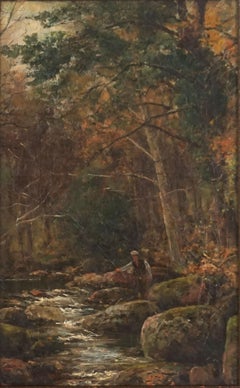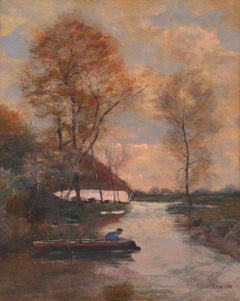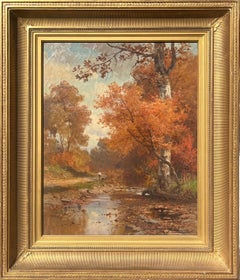Items Similar to "Fishing in Autumn" Frederick Dickinson Williams, Early 20th Century Landscape
Want more images or videos?
Request additional images or videos from the seller
1 of 7
Frederick Dickinson Williams"Fishing in Autumn" Frederick Dickinson Williams, Early 20th Century Landscape1914
1914
$1,600
$2,00020% Off
£1,203.85
£1,504.8120% Off
€1,390.83
€1,738.5420% Off
CA$2,261.22
CA$2,826.5220% Off
A$2,455.24
A$3,069.0520% Off
CHF 1,300.23
CHF 1,625.2920% Off
MX$30,094.24
MX$37,617.8020% Off
NOK 16,090.87
NOK 20,113.5820% Off
SEK 15,205.02
SEK 19,006.2720% Off
DKK 10,380.58
DKK 12,975.7320% Off
About the Item
Frederick Dickinson Williams
Fishing in Autumn, 1914
Signed and dated lower left
Oil on board
9 1/4 x 6 7/8 inches
Frederick Dickinson Williams was a portrait and landscape artist. For the first part of his adult life, Williams taught drawing in Boston public schools. He exhibited at the Boston Athenaeum as well as at the National Academy of Design and the Boston Art Club. He studied at Harvard in 1850. Sometime in the 1870’s he went to Paris for further study and exhibited at the Paris Salon in 1878. Later, he returned to Boston and remained there the rest of his life. His last known address was Brookline, MA.
- Creator:Frederick Dickinson Williams (1829 - 1915, American)
- Creation Year:1914
- Dimensions:Height: 16 in (40.64 cm)Width: 13.25 in (33.66 cm)
- More Editions & Sizes:Unique WorkPrice: $2,000
- Medium:
- Movement & Style:
- Period:
- Condition:
- Gallery Location:New York, NY
- Reference Number:1stDibs: LU1841215192022
About the Seller
5.0
Platinum Seller
Premium sellers with a 4.7+ rating and 24-hour response times
Established in 2022
1stDibs seller since 2022
122 sales on 1stDibs
Typical response time: <1 hour
- ShippingRetrieving quote...Shipping from: New York, NY
- Return Policy
Authenticity Guarantee
In the unlikely event there’s an issue with an item’s authenticity, contact us within 1 year for a full refund. DetailsMoney-Back Guarantee
If your item is not as described, is damaged in transit, or does not arrive, contact us within 7 days for a full refund. Details24-Hour Cancellation
You have a 24-hour grace period in which to reconsider your purchase, with no questions asked.Vetted Professional Sellers
Our world-class sellers must adhere to strict standards for service and quality, maintaining the integrity of our listings.Price-Match Guarantee
If you find that a seller listed the same item for a lower price elsewhere, we’ll match it.Trusted Global Delivery
Our best-in-class carrier network provides specialized shipping options worldwide, including custom delivery.More From This Seller
View All"An Autumn Landscape" Jasper F. Cropsey, Hudson River School, Fall Landscape
By Jasper Francis Cropsey
Located in New York, NY
Jasper F. Cropsey
An Autumn Landscape
Signed and dated J.F. Cropsey 1898
Oil on canvas
14 x 24 inches
Provenance
Private Collection Texas, acquired in the early 1900s
Thence by desc...
Category
1890s Hudson River School Landscape Paintings
Materials
Canvas, Oil
"Stone Wall, Autumn, " George Smillie, Tonalist Fall Landscape View
By George Henry Smillie
Located in New York, NY
George Henry Smillie (1840 - 1921)
Stone Wall, Autumn, 1879
Oil on canvas
9 1/2 x 15 inches
Signed and dated lower right
Provenance:
Skinner, Boston, September 19, 2014, Lot 389
The career of George Smillie (1840-1921) followed the arc of nineteenth-century U.S. landscape painting. Trained in the Hudson River School tradition, Smillie successfully adapted to changing U.S. tastes and growing interest in European trends. In the late 1800s, he moved to tonalist paintings full of brushwork and influenced by French Barbizon painting. By the end of his career, he had lightened his palette to produce works similar to those of the U.S. impressionists. Yet in all styles, he was never less than competent, and his tonalist work is among the best produced in the United States.
Like many nineteenth-century painters, George Smillie’s artistic training began with the study of printing. His father, James Smillie...
Category
1870s Tonalist Landscape Paintings
Materials
Canvas, Oil
"Fishing by the Bridge" Joseph Jefferson, American Landscape, Barbizon School
Located in New York, NY
Joseph Jefferson
Fishing by the Bridge, circa 1885
Signed lower right
Oil on canvas
15 x 21 inches
Born in Philadelphia, Joseph Jefferson grew up in the theater. His first role was...
Category
1880s Barbizon School Figurative Paintings
Materials
Canvas, Oil
"Autumn on the Farm" Charles Harold Davis, Fall Colors, Connecticut Hillscape
By Charles Harold Davis
Located in New York, NY
Charles Harold Davis
Autumn on the Farm, circa 1930s
Signed lower left
Oil on canvas
20 x 27 1/4 inches
Provenance
Private Collection, Florida
Charles Harold Davis was born in Ame...
Category
1910s American Impressionist Figurative Paintings
Materials
Canvas, Oil
"Autumn Landscape" Bruce Crane, Bright Orange, Luminous, Tonalist Fall Scene
By Bruce Crane
Located in New York, NY
Bruce Crane
Autumn Landscape
Signed lower right
Oil on canvas
16 x 24 inches
Bruce Crane Was born in New York City, he studied with Alexander H. Wyant before attending the Art Stud...
Category
1910s American Impressionist Figurative Paintings
Materials
Canvas, Oil
"Autumn Landscape, " Bruce Crane, Tonalist American Impressionist Fall Scene
By Bruce Crane
Located in New York, NY
Bruce Crane (1857 - 1937)
Autumn Landscape
Oil on canvas
25 x 30 inches
Signed lower right
Robert Bruce Crane was an American painter. He joined the Lyme Art Colony in the early 190...
Category
Early 20th Century Tonalist Landscape Paintings
Materials
Canvas, Oil
You May Also Like
Original Hudson River School Autumn Painting of Fly Fisherman by Woodland Stream
By Jasper Francis Cropsey
Located in Soquel, CA
Original Hudson River School Catskill Mountain Autumn Painting of Trout Fly Fisherman at Woodland Stream by Jasper Francis Cropsey
A leading painter of the Hudson River School, Jasp...
Category
1870s Hudson River School Landscape Paintings
Materials
Linen, Oil, Stretcher Bars
'Evening Fishing', Sunset River Landscape, Chicago Society of Artists, New York
Located in Santa Cruz, CA
Signed lower right, 'Arthur Dawson' (American, 1857-1922) and painted circa 1915; additionally inscribed, verso, 'The Stream'.
Bearing old framing label: Ferguson Art Shop, Flint, Mi...
Category
1910s Landscape Drawings and Watercolors
Materials
Watercolor, Gouache
George F. Harris (1856-1924) - Framed Oil, Fishing near the Falls
By George Harris
Located in Corsham, GB
A delightful oil landscape by the 19th century artist George F. Harris (1856-1924). The scene depicts a single fisherman waiting for his first catch below the river falls. The artist...
Category
Late 19th Century Landscape Paintings
Materials
Oil
Autumn Stroll, 1885 by Hudson River School artist Thomas B. Craig (1849-1924)
Located in New York, NY
Painted by Hudson River School artist Thomas B. Craig (1849-1924), "Autumn Stroll along the River Path" is oil on canvas and measures 20 x 16 inches. The...
Category
19th Century Hudson River School Landscape Paintings
Materials
Canvas, Oil
C. Wilhay - Signed and Framed Mid 20th Century Oil, Fishing at the Lake
Located in Corsham, GB
A fine American School oil painting of a gentleman fishing with his female companion. Presented in a gilt effect frame. Signed. On canvas.
Category
20th Century Landscape Paintings
Materials
Oil
Fishermen by a Brook by Charles Wilson Knapp (American, 1823-1900)
By Charles Wilson Knapp
Located in New York, NY
Hudson River School artist Charles Wilson Knapp's (1823-1900) "Fisherman by a Brook" is oil on canvas and measures 24 x 20 inches. The work is signed by Knapp at the lower left. The ...
Category
19th Century Hudson River School Landscape Paintings
Materials
Canvas, Oil
